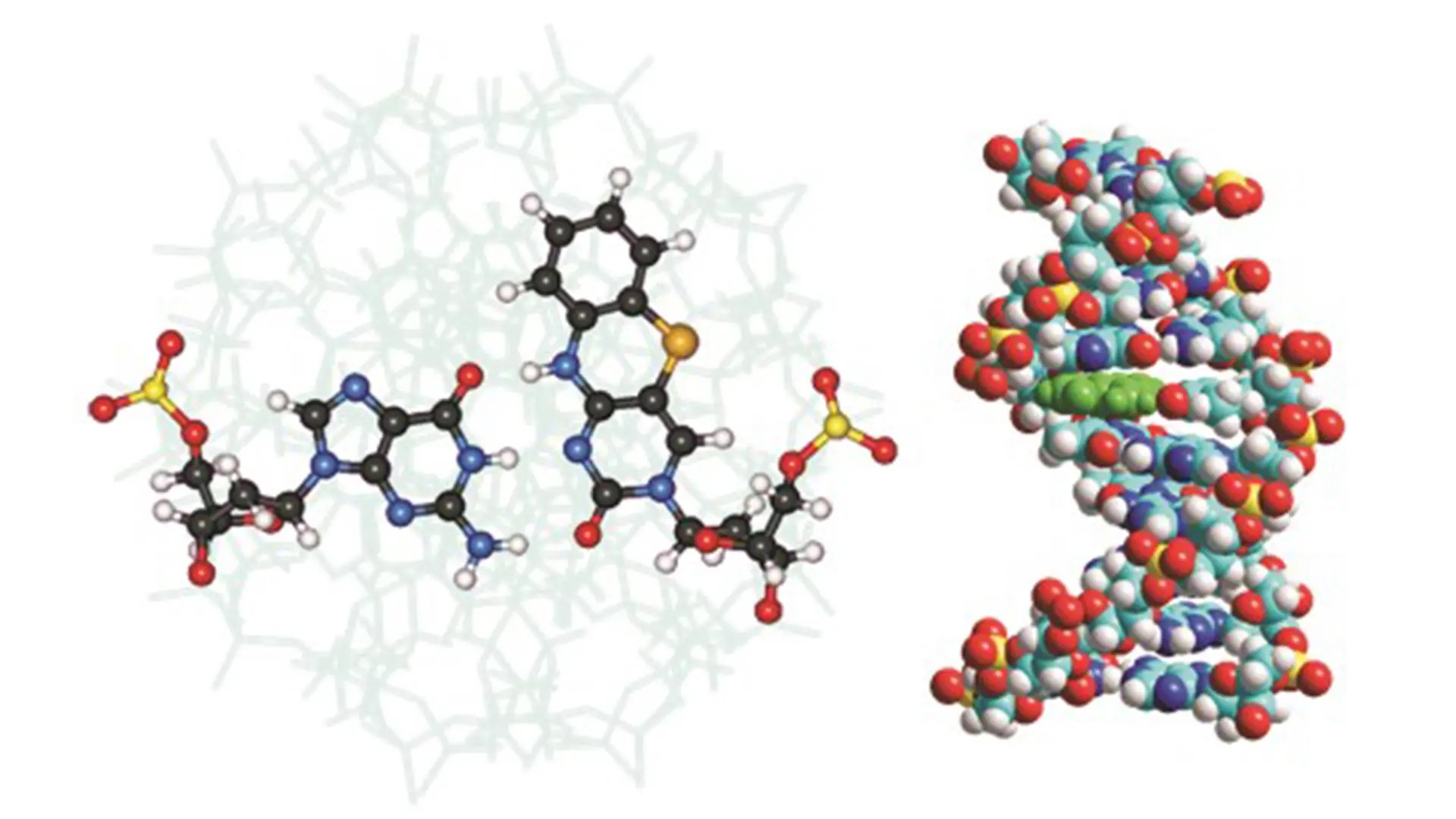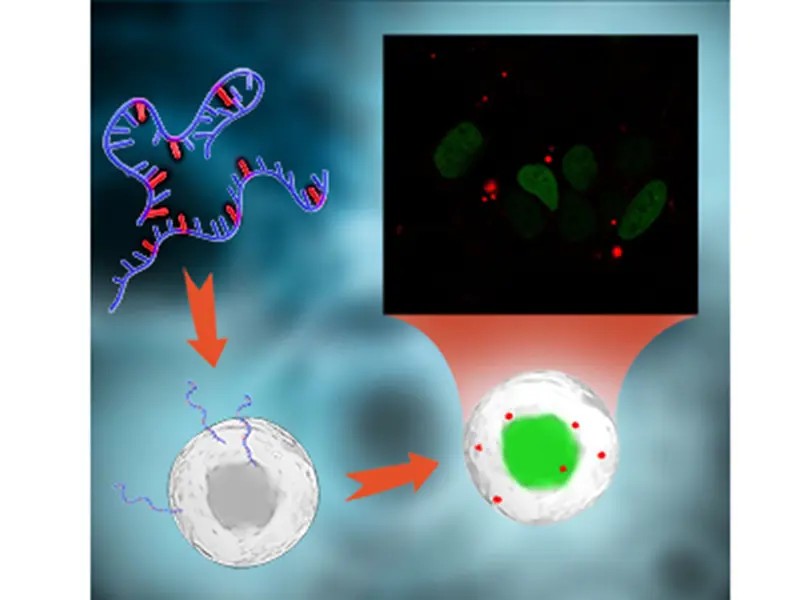The group develops molecules that can be used to replace the natural DNA/RNA building blocks, the bases, and unlike the bases, which are transparent, has properties that make them fluorescent (light emitting) when they are hit by light of the correct colour (300-500 nm). These so-called fluorescent base analogues (see reviews by us in QRB 2010 and BJOC 2018) have molecular properties that are optimal for being inserted into the natural DNA/RNA structure (Figure 1). They can therefore be used to, on a very detailed level, understand more about essential processes in cells like replication, transcription, and translation. Fundamental knowledge thereof is vital to comprehend cellular processes and errors that could occur in such processes and cause diseases.

One of the goals is to design and construct new fluorescent base analogues that can replace all the natural bases. This is done by trying to predict structural and spectral properties with the help of quantum chemical methods where after promising candidates are synthesized. Parts of this work is performed in collaboration with Professor Morten Grøtli at Göteborgs Universitet and AstraZenica (göteborg). After the synthesis, the new base analogues are investigated to determine whether they have promising fluorescence properties, whereafter interesting ones are incorporated into DNA/RNA (often in collaboration with Professor Tom Brown, Oxford, UK) for further characterization. The characterization is performed to understand how well the fluorescent base analogue works as a replacement for a natural base - it should not perturb the properties or structure of the DNA/RNA - as well as to establish its spectral and photophysical properties for further spectroscopy and microscopy use in biochemically and biologically relevant investigations (see, for example, NAR 2020 where we developed an adenine analogue for DNA and RNA).
Another goal is to use the novel fluorescent base analogues, to make them available for other researchers as well as to develop biochemical/biophysical/biological methods where the probes can be used. An example thereof is a methodology that constitutes a unique tool to measure short distances in biomolecular systems and has been developed by the group. We have termed it interbase FRET and it can be used to obtain detailed structure information about DNA and RNA and molecules that interact with them. The investigations that can be performed using FRETmatrix have been enabled thanks to newly developed FRET pairs. Our first DNA interbase FRET pair, which was the first of its kind, was published in JACS 2009 and in JACS 2017 we published another FRET pair based on adenine analogues. Now we have also extended the interbase FRET methodology to RNA-systems (NAR 2019 and 2020) and the FRET pairs are being used by the group in several studies (PNAS 2012, NAR 2016, and Sci. Rep. 2021).

The group is one of six labs in Sweden involved in the SSF Industrial Research Centre (IRC) FoRmulaEx. In this extensive academia/industry-collaboration fluorescent base analogues and methodologies in connection to that are developed and used to enhance the understanding regarding the process of cellular uptake, trafficking and endosomal escape of RNA-based drugs and vaccines. In 2021 the group presented novel methodology for using fluorescent base analogues for live-cell imaging of mRNA-based drugs and vaccines (Figure 2; JACS 2021) and of ASO gapmers (Sci. Rep. 2021) in collaboration with the Esbjörner lab. The group also has activities regarding DNA and RNA in nanotechnology together with among others the Westerlund lab. We investigate DNA and RNA structure, dynamics and stability using single-molecule optical tweezers experiments (PCCP 2021 and IJMS 2021).
Several of the fluorescent molecules in their phosphoramidite form, which have been developed by the group, are now distributed through a collaboration between the American company Glen Research Corp., world leading in chemicals related to DNA/RNA, and ModyBase HB, a company founded by Marcus Wilhelmsson.
